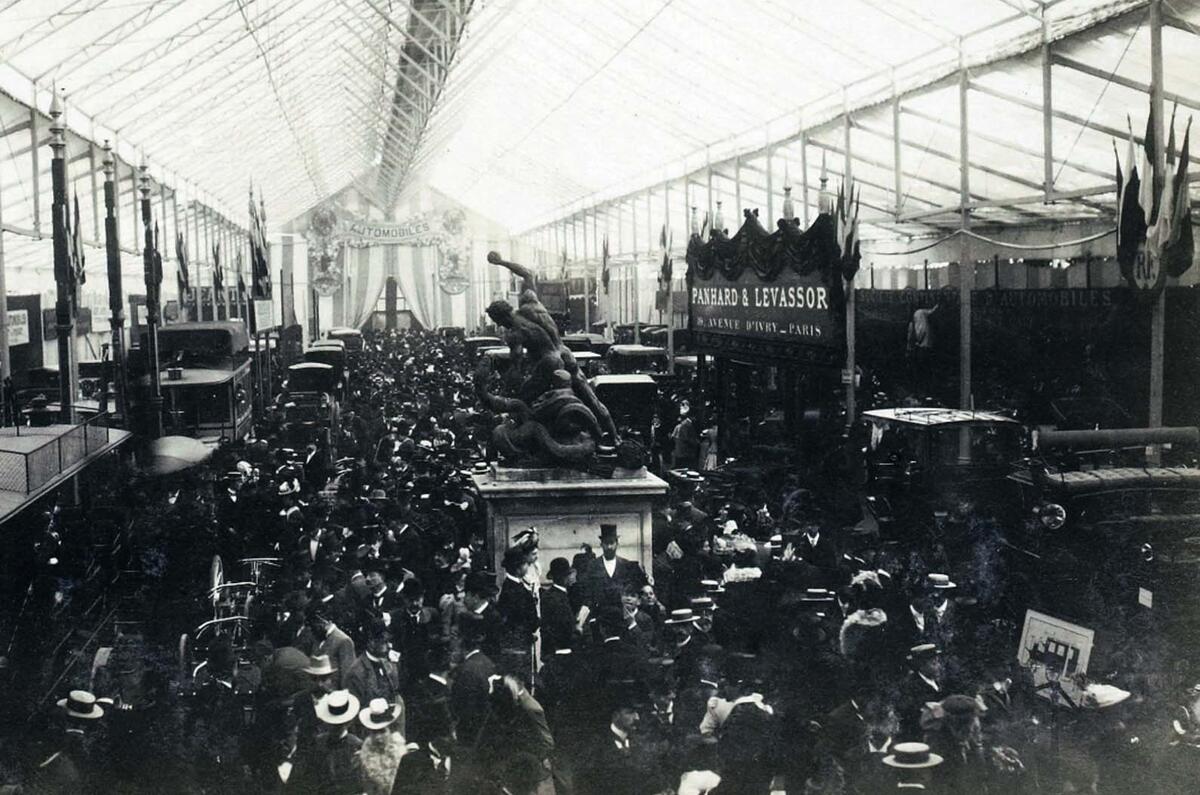Those wanting to display a vehicle at the world’s first international motor show, the Automobile Club de France’s Exposition Internationale d’Automobile of 1898, held on the terrace of the Jardin des Tuileries in Paris, first had to drive the car from Paris to Versailles and back in the presence of an ACF official. To “avoid the presentation of automobiles which would only carry the name, and not the qualities”.
It’s hard to imagine that, last week, as the world’s oldest motor show hit its 120th anniversary, organisers of what is today called the Mondial de l’Auto would have made anything like the same demands of exhibitors. Or any demands at all. Please, just come. The door’s open.
The show’s problem isn’t declining visitor numbers. At least, not yet, though it’ll be interesting to see how many came this year. But in 2016, organisers say a million visitors walked through the show’s doors, making the biennial exhibition the most visited motor show in the world.
There is, though, an issue with no-shows from manufacturers. That Ford, Opel, FCA, Volkswagen and others didn’t think there was enough in it to turn up to Paris suggests big motor shows are in a downward trajectory. The Detroit motor show, once a show so important that correspondents and executives would see in the new year while travelling to it, has had to move to June in 2020 in search of a new impetus.
The short of it is that exhibitors will turn up to events if they think they’ll sell cars at them. Someone in Volvo’s UK management once told me – probably 15 years ago – that country fairs were better for selling cars than traditional motor shows, because they gave Volvo the chance to put relevant metal before the right kind of people.
And there are more relevant exhibitions than big, bland, stuffy show halls: the SEMA Show, Goodwood's various, the Consumer Electronics Show, or about a gazillion Concours des Pantalons Rouges.
If people want to stay away from some of those, though – and given the cost and time it takes to get there, I wouldn’t blame them – they don’t even need a real location to see cars up close, because car makers will gladly electronically visit their lap. And they can do that without the help of traditional media. They’ve got the money and time to make better- looking videos and presentations than editorial broadcasters.
And, crucially, in doing so they can present a potential customer only the information they choose.
And so car makers have the option: spend half a million pounds or more creating a show stand and crewing it for weeks, presenting a car to the (mostly local) several hundred thousand people who come through the door, who have an interest in cars, but not necessarily that particular one. Meanwhile, an independent media presents said car (on display, statically, beneath blinding lights and sitting on lino or tiles or carpet – a situation it’ll never be in in real life) however it chooses; almost certainly mentioned alongside its rivals.
Or manufacturers spend less money creating something slicker, precisely to their choosing, to reach the eyes and ears of many millions, targeting the right people, who don’t have to so much as get off the sofa.
Less effort; more potential reward. And they still don’t have to drive to Versailles and back.
Read more
All the news from Paris motor show
Opinion: how Bloodhound can survive
Matt Prior: why I dislike the new Porsche 935
Confession time – why I actually quite like hot SUVs




Join the debate
Add your comment
It's sad to see the
It's sad to see the disapearrance of nice paper documentations. The only thing they say : give e your email adress?
And there are too many electric concept cars and SUV.
For the Paris concept cars, I would retain the Audi PB18, Peugeot e Legend and Mercedes Eq Silver Arrow.
Motorshows used to be good to
Motorshows used to be good to visit for true launch surprises. They were genuinely the first opportunity that you'd get to see a new model - you wouldn't even have seen a picture beforehand.
Nowadays, even the new stuff at motorshows seems old, because we saw pictures of it months ago.
JLR are always roped off, the
JLR are always roped off, the same as many many many other brands are, so please do not make out like it is something unusual, it is not, the bigger shows are handy for when you want to compare a few cars together, and as for local shows, yeah right, they are generally staffed by local sales stff that cant be bothered to even talk to you.I was at a rather large event at the weekend, at Snetterton, (Ford) two dealers were there, one was good, the other staffed by two woman, was as much use as a kick in the teeth, we parked up opposite them, and when we were having lunch, they never spoke to one person, even though they were surrounded by people, they just sat there talking to each other. And this is like this at most local events, you get one or two dealers that will chat and talk about the cars, but the majority dont, and make it a very unfriendly place/stand to visit.